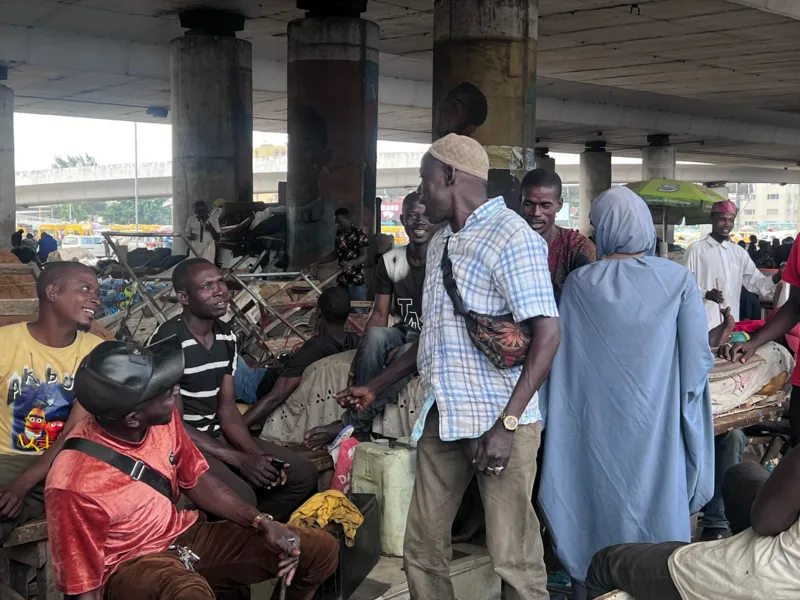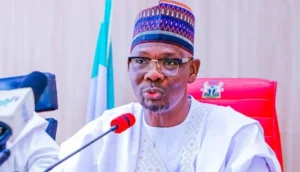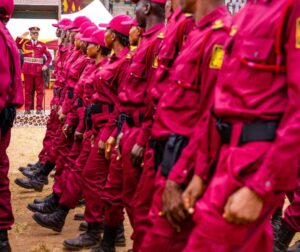Housing has long been a significant challenge for cities worldwide, especially in rapidly growing urban centers. In Lagos, Nigeria’s largest city and its economic hub, the issue of affordable housing is a severe crisis. With a population of over 22 million, Lagos is one of the most crowded cities in the world, and many residents are unable to secure proper shelter. This housing crisis has driven thousands to seek refuge in an unlikely and dangerous place: under the city’s bridges.
On May 1, 2024, Lagos State Commissioner for Environment and Water Resources, Tokunbo Wahab, revealed on social media that 86 partitioned rooms were discovered under the Dolphin Estate Bridge in Ikoyi, Lagos Island. This discovery shocked many Nigerians and ignited a public conversation about life under Lagos bridges. Some questioned how these structures came to be, while others were concerned about the conditions under which these people live.
The reality is that these makeshift communities beneath the bridges serve as a refuge for those unable to afford housing. Yet, they are also dangerous areas, plagued by crime and other illicit activities.
While some may see these under-bridge areas as informal housing, they are far from safe. As night falls, these locations become hubs for criminal activities, making them extremely dangerous, especially for those unfamiliar with the area. Inhabitants of these places often include roughnecks, street gangs, and criminals. From petty theft to more violent crimes such as mugging, sexual assault, and even murder, the under-bridge territories in Lagos pose a significant threat to anyone passing through at night.
Places like Oshodi, Mile 2, Ojuelegba, Alapere, and Apongbon are notorious for these activities. For example, Oshodi under the bridge is infamous for its youth gangs, which primarily consist of boys aged between 10 and 17. These young boys are often drawn into a life of crime, working as bus conductors for drivers who pay them little and expose them to all kinds of dangers.
Many of these boys, some of whom have run away from home or lost contact with their families, live rough lives. They grow up exposed to drugs, violence, and a hardened street culture, which drastically limits their opportunities for a better future.
These under-bridge communities highlight a deeper problem: Lagos’s severe housing shortage. As the population continues to grow, the availability of affordable housing has not kept pace. Many residents cannot afford to rent even a basic room in the city, let alone secure permanent housing. This drives thousands into makeshift shelters, slums, and, as in this case, under bridges.
Some of these people never intended to live this way. Circumstances such as job loss, migration, or abandonment forced them to make a home under bridges or in other unsafe areas. The story is the same across many spots in Lagos where people gather at night: the abandoned vehicles, makeshift kiosks, and run-down buses become their makeshift homes until the next day breaks.
One location that paints a clear picture of this is Mile 2, where many individuals sleep under the bridge and around BRT bus stops. As soon as daylight hits, they disappear, but by nightfall, they return to resume their temporary existence.
Speaking on the matter, legal professionals and social commentators have highlighted the humanitarian aspect of the problem. According to lawyer Mr. Supo Oladeinde, the acute shortage of housing is at the root of this crisis. He notes that the Lagos State Government, alongside private developers, needs to focus on building affordable housing for the city’s growing population.
Oladeinde calls for large-scale projects, similar to the low-cost housing estates constructed by former Lagos governor Lateef Jakande in the early 1980s. These estates provided affordable housing for thousands of low-income earners and helped prevent the housing crisis from worsening. However, since Jakande’s tenure, the pace of housing development has not kept up with demand, resulting in a deepening crisis.
Oladeinde stresses that without a deliberate effort to create low-cost housing that can be easily afforded by Lagos’s poor and working-class population, more people will continue to find themselves in desperate living situations, like under the bridges.
Life under Lagos bridges isn’t just a safety concern—it’s a major health and environmental risk as well. Those living in these areas often have no access to basic sanitation facilities. Open defecation is common, leading to unsanitary conditions that pose significant health risks, both to the inhabitants themselves and to the broader public.
These areas also contribute to environmental degradation, with waste and pollution accumulating under the bridges. The lack of proper waste disposal, coupled with the high volume of foot traffic and vehicular activity, creates hazardous living conditions that only worsen over time.
The issue of people living under bridges is symptomatic of a much larger problem: the housing deficit in Lagos. Addressing this problem requires a multi-faceted approach, including:
The Lagos State Government must take the lead in developing low-cost housing solutions. These projects should be designed to accommodate low-income earners and not just the middle or upper class, as has often been the case in recent developments.
Private developers should be incentivized to build affordable housing. This could involve tax breaks or other financial incentives to encourage the construction of homes that are accessible to Lagos’s poor.
In addition to building homes, there needs to be a focus on improving social services for the homeless and those living in precarious situations. This includes offering healthcare, sanitation facilities, and educational programs for street children who have been left without support.
Many of those living under the bridges do so because they cannot afford stable housing due to unemployment or low-paying jobs. By creating more employment opportunities and supporting small businesses, Lagos can help reduce the number of people who fall into extreme poverty and are forced into homelessness.
The life of those living under Lagos bridges is a harsh reality that reflects the broader issues of housing shortages, urban poverty, and social neglect. These makeshift communities are dangerous, unhealthy, and unsustainable. However, with proper planning, government action, and the support of private developers, Lagos can begin to address this issue, offering its residents a path to secure and affordable shelter. Until then, thousands of men, women, and children will continue to call the city’s under-bridges their home, trapped in a cycle of poverty and risk.







